
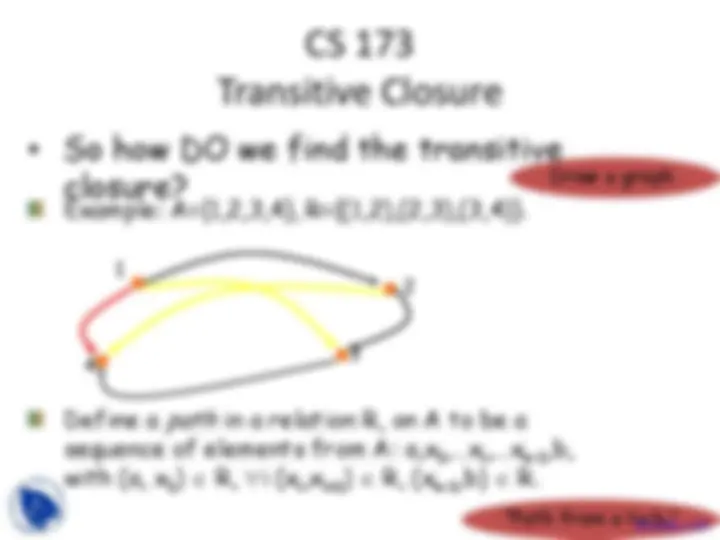
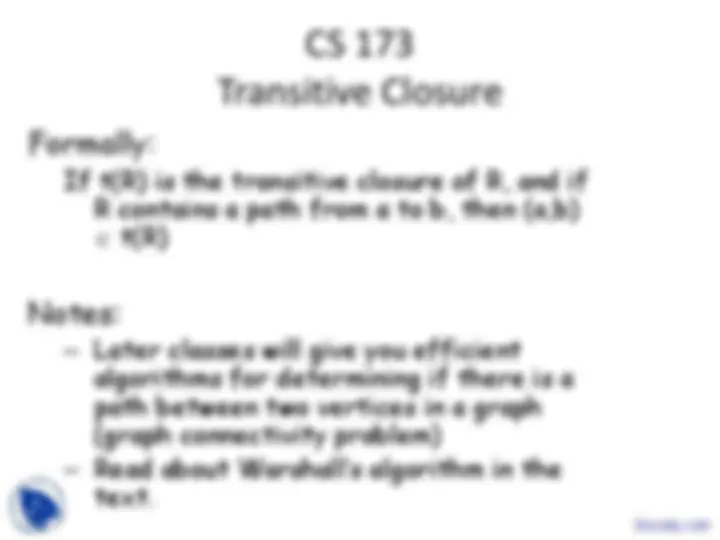
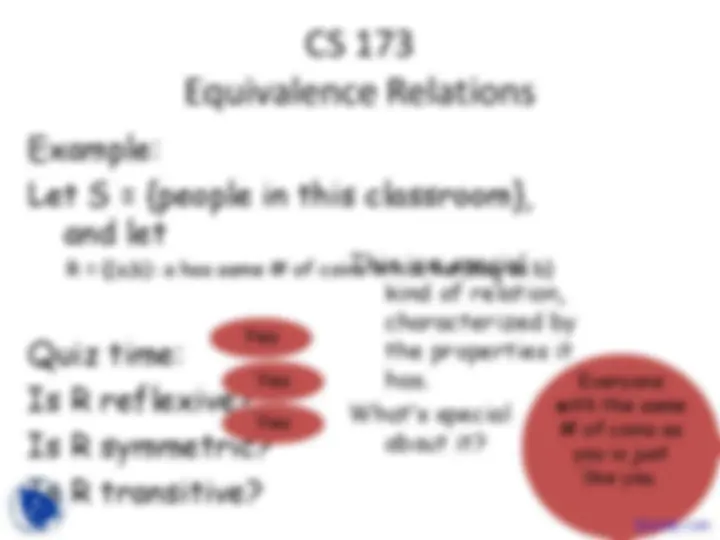
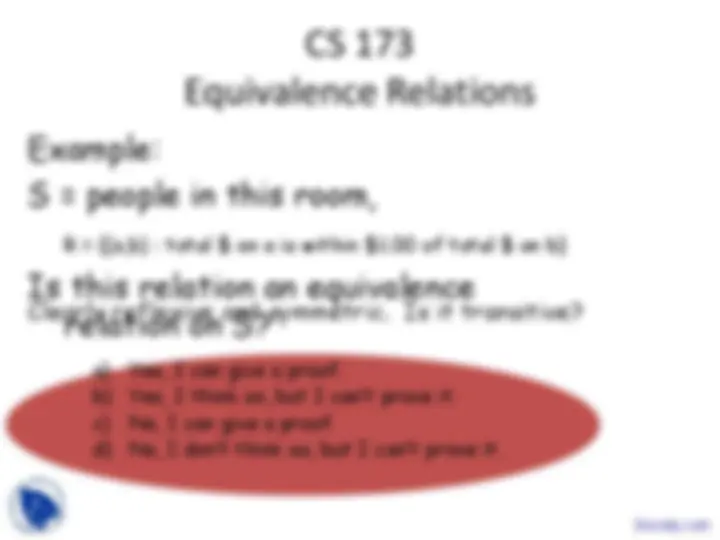
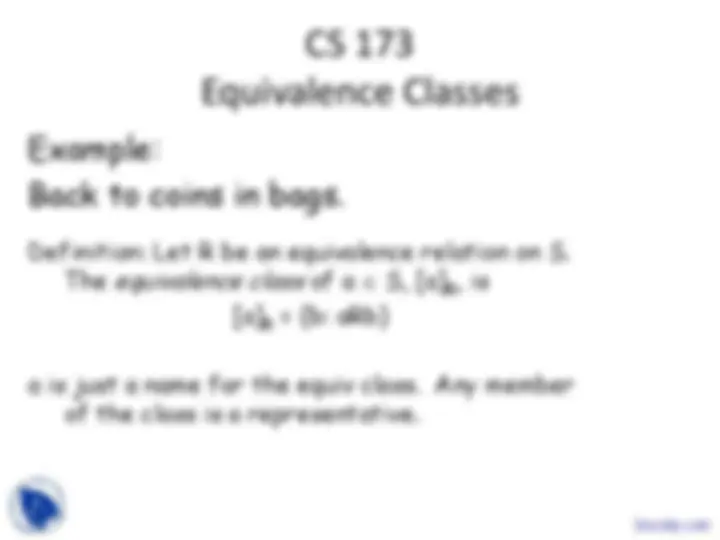
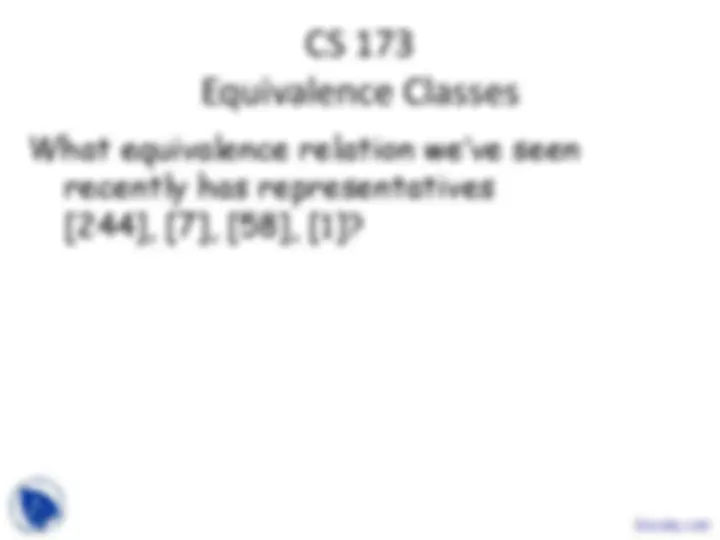
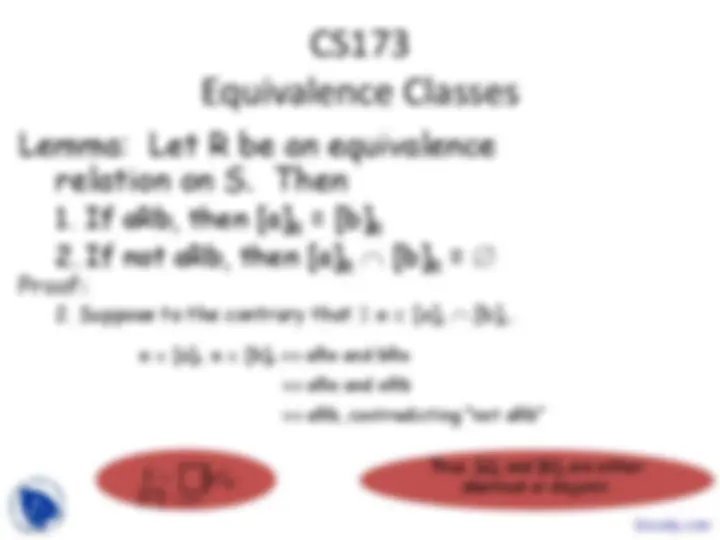
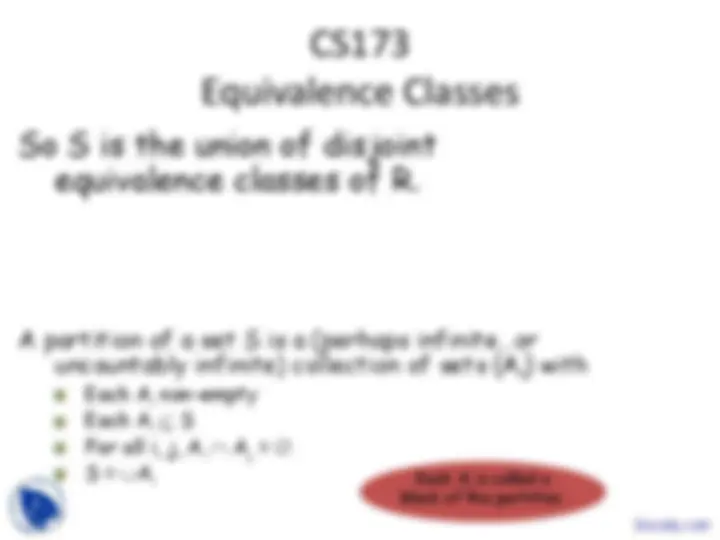
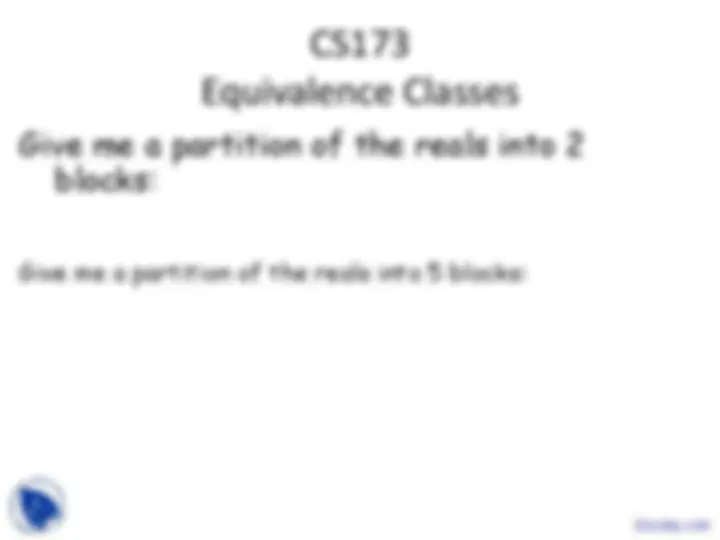
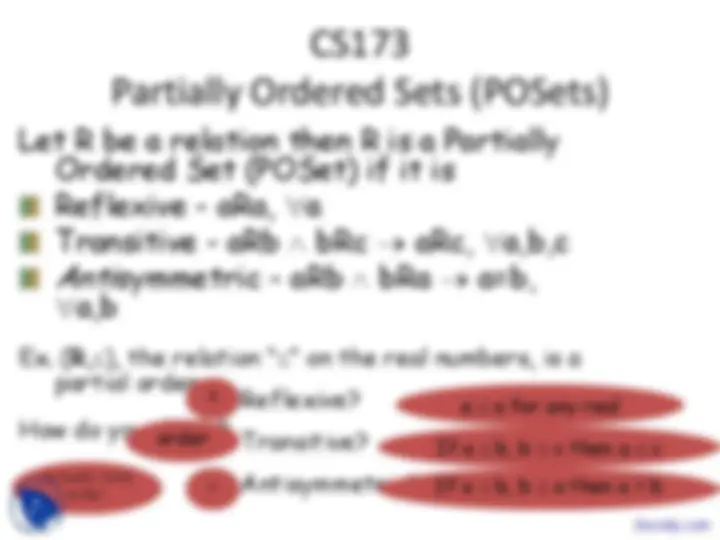
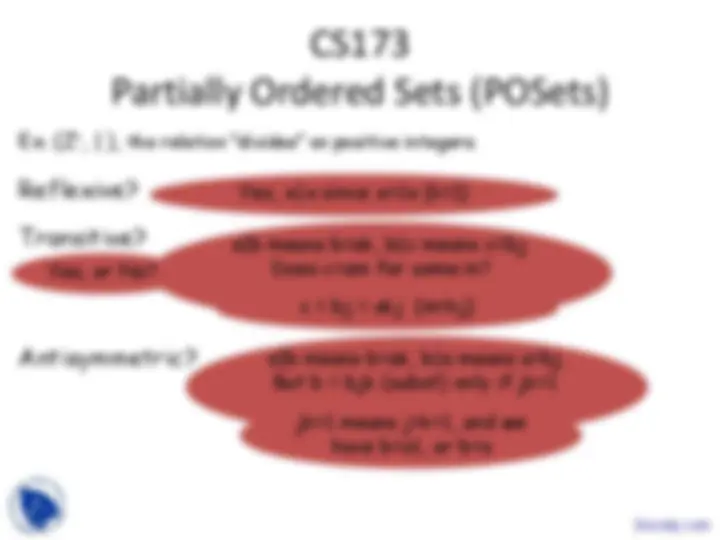
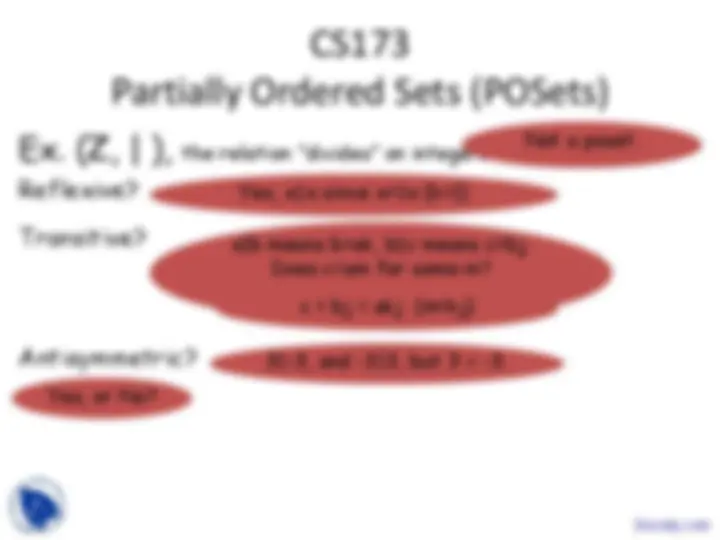
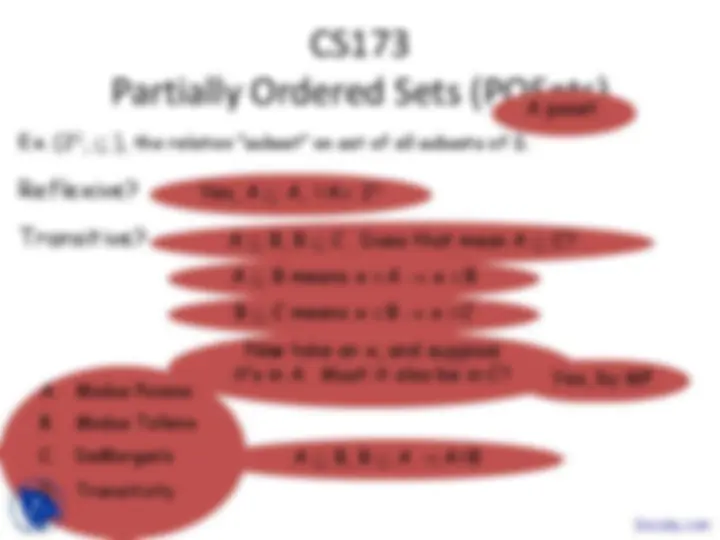
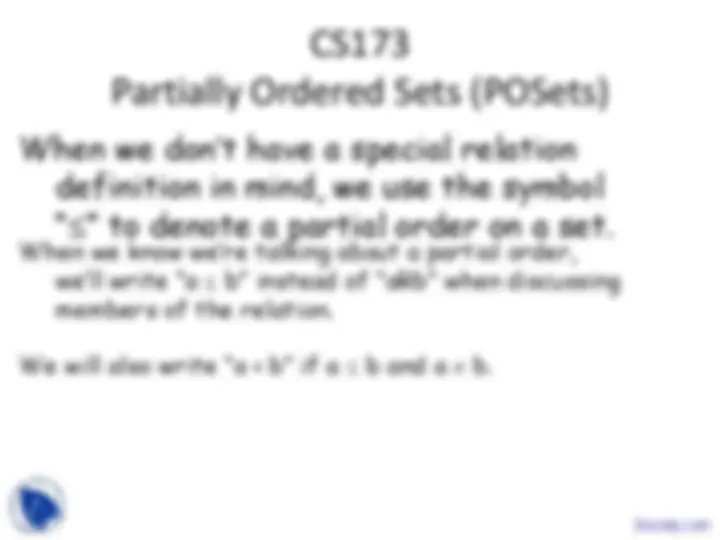
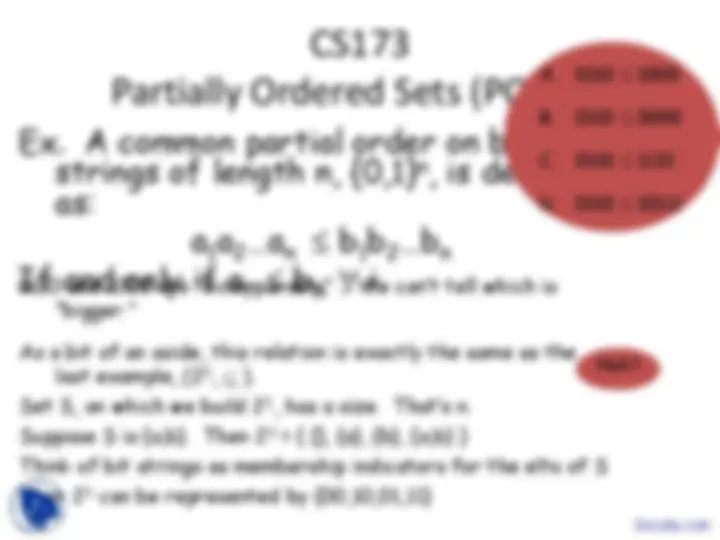
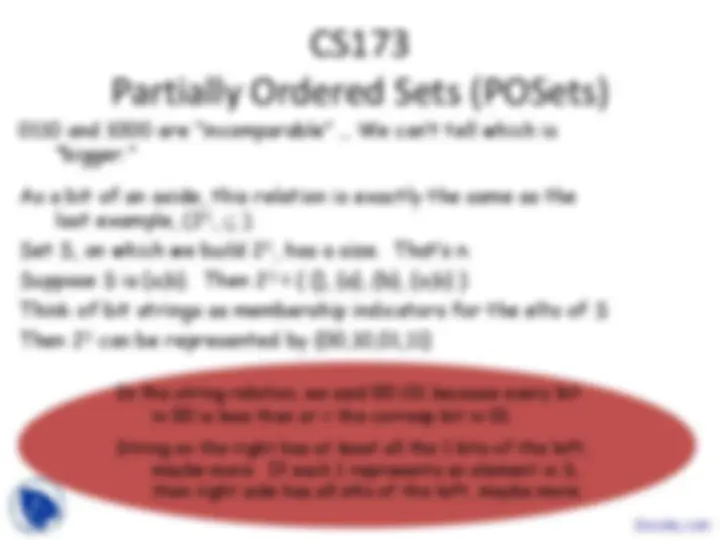
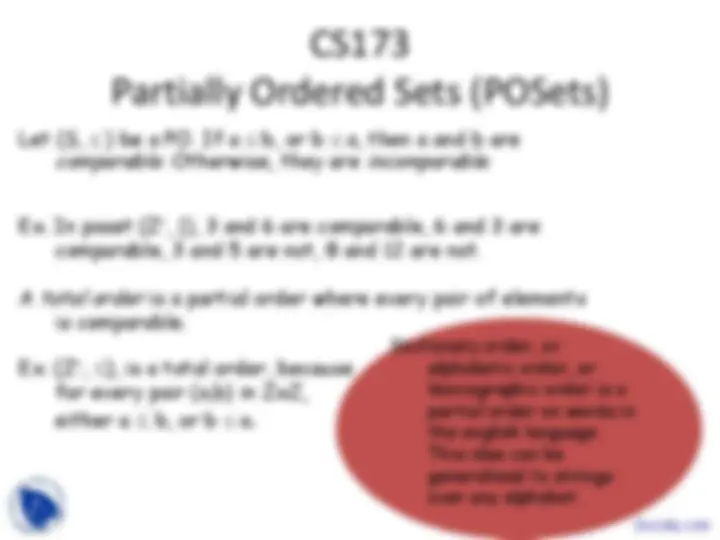
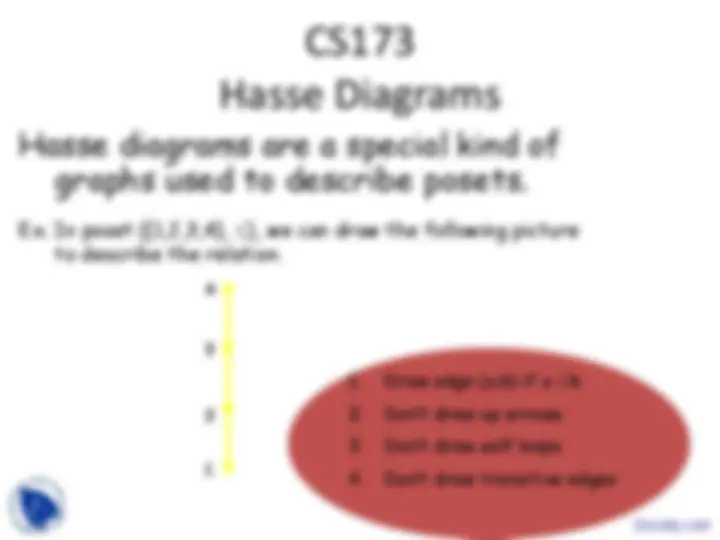
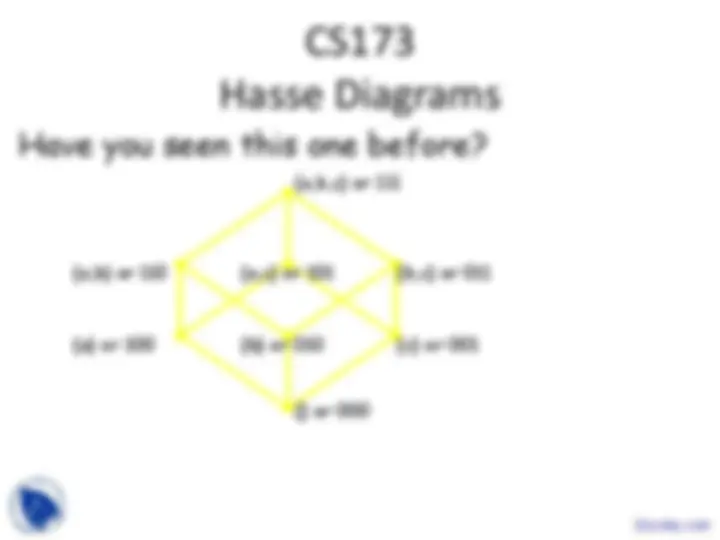
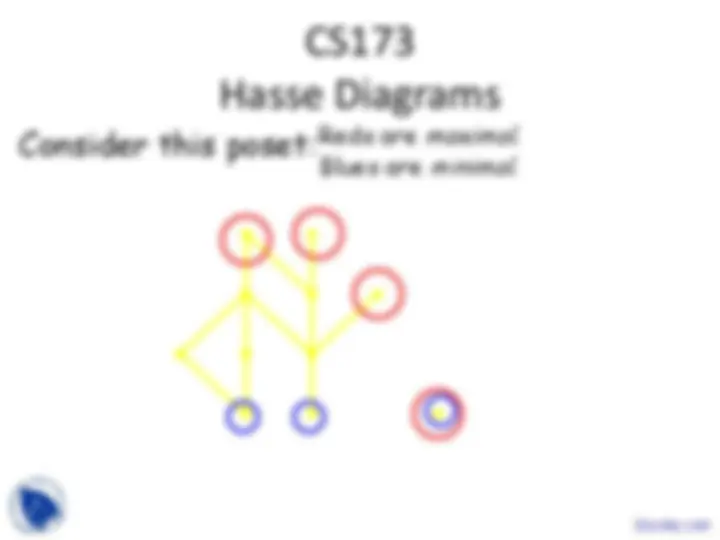
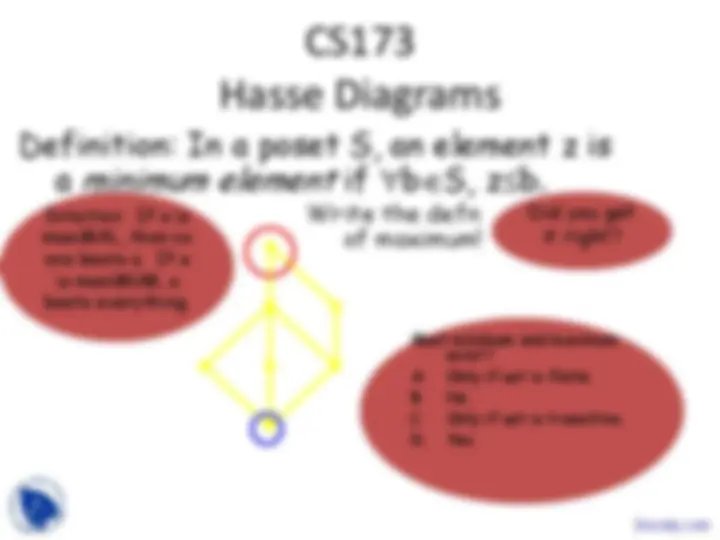
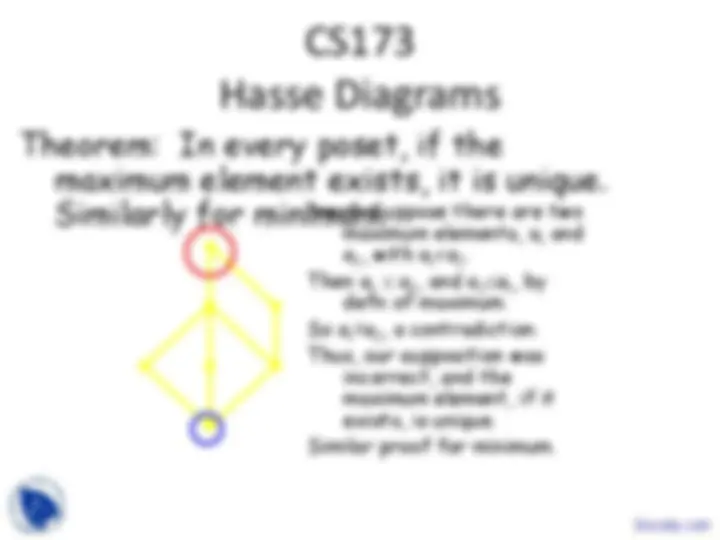
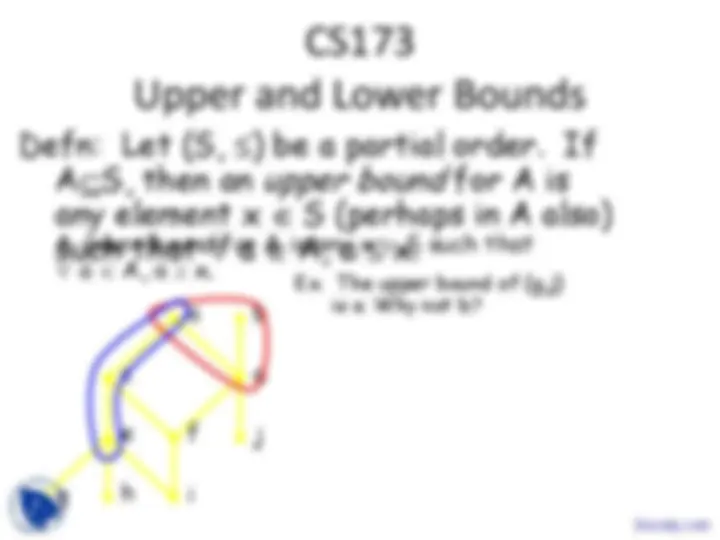
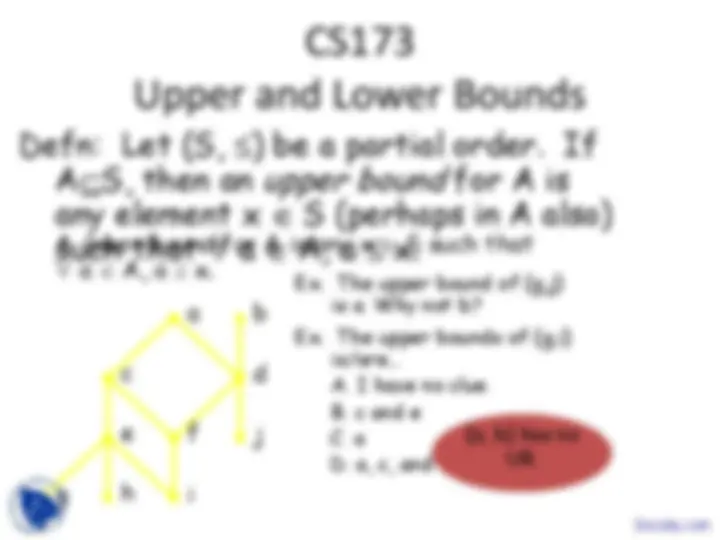
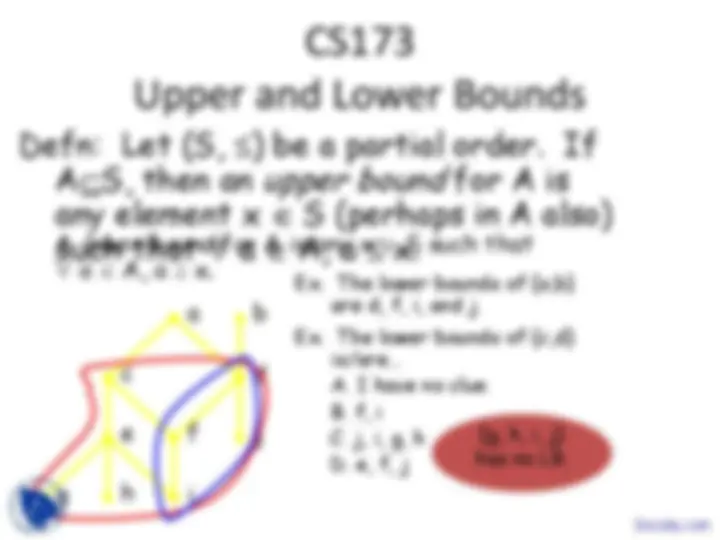
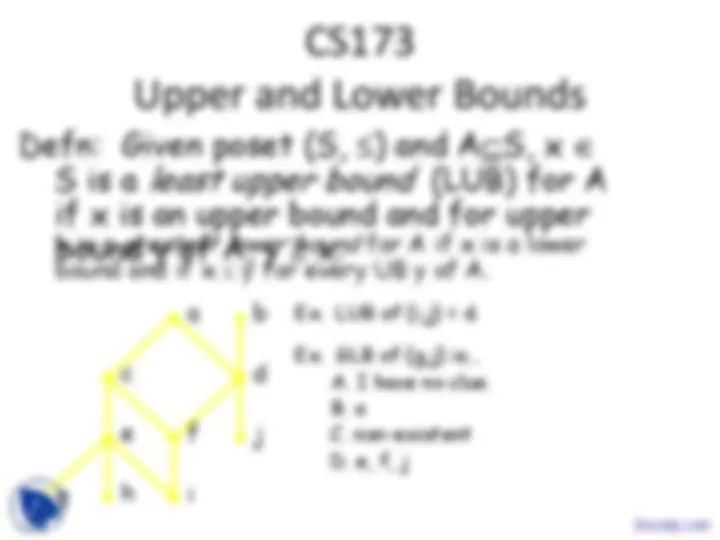
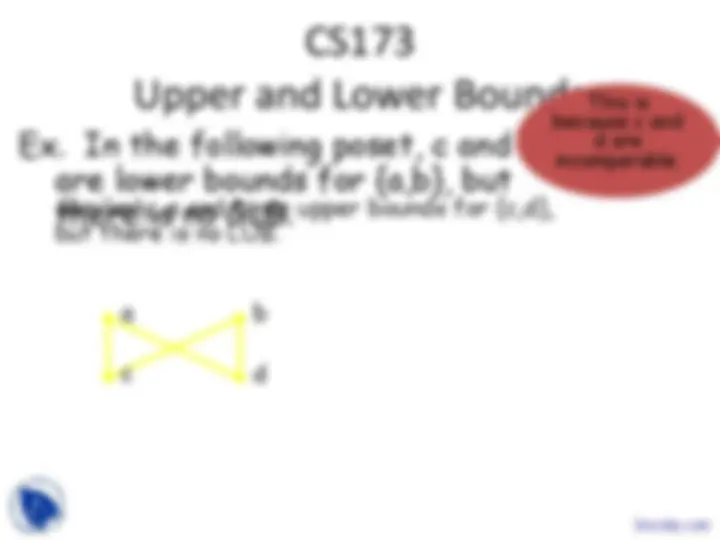
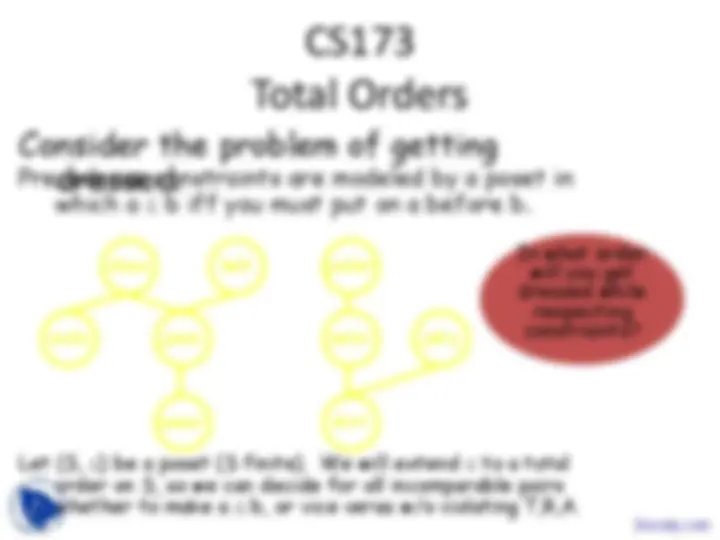
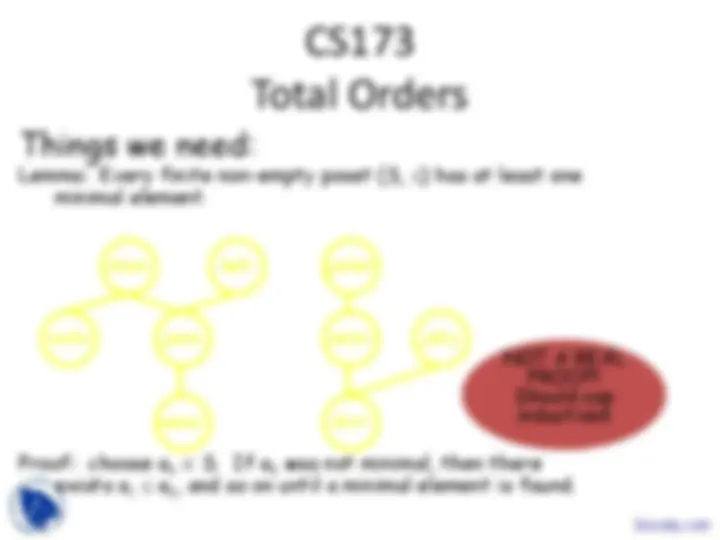
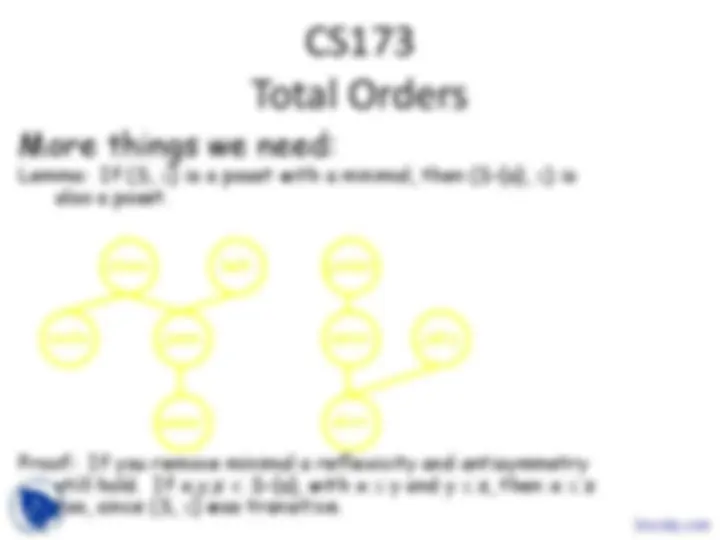
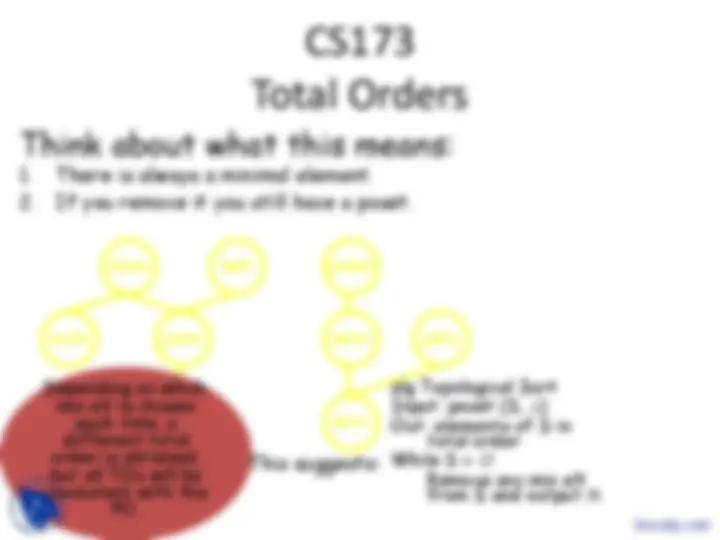
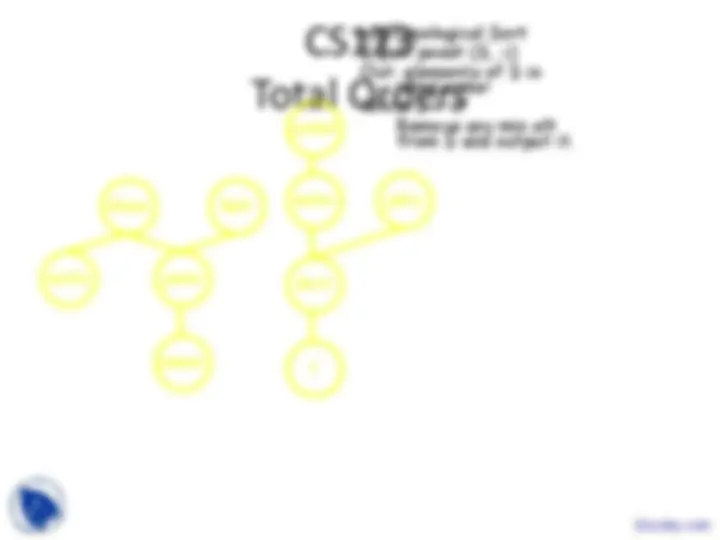


Study with the several resources on Docsity

Earn points by helping other students or get them with a premium plan


Prepare for your exams
Study with the several resources on Docsity

Earn points to download
Earn points by helping other students or get them with a premium plan
Community
Ask the community for help and clear up your study doubts
Discover the best universities in your country according to Docsity users
Free resources
Download our free guides on studying techniques, anxiety management strategies, and thesis advice from Docsity tutors
During the study of discrete mathematics, I found this course very informative and applicable.The main points in these lecture slides are:Transitive Closure, Closure of Relation, Sequence of Elements, Warshall’s Algorithm, Graph Connectivity Problem, Equivalence Relations, Equivalence Classes, Collection of Sets, Definition of Partition
Typology: Slides
1 / 40

This page cannot be seen from the preview
Don't miss anything!

































(a,c): ∃b (a,b),(b,c) ∈ R
Which of the following is true: a) This set is transitive, but we added too much. b) This set is the transitive closure of R. c) This set is not transitive, one pair is missing. d) This set is not transitive, more than 1 pair ismissing.
R = {(a,b): a has same # of coins in his/her bag as b}
Yes
Yes
Yes
Everyone with the same
you is just like you.
R = {(a,b) : total $ on a is within $1.00 of total $ on b}
a) Yes, I can give a proof. b) Yes, I think so, but I can’t prove it. c) No, I can give a proof. d) No, I don’t think so, but I can’t prove it.
Notice this is just a subset of S.
S = {people in this room}
R = {(a,b) : a has the same # of coins in his/her bag as b}
x ∈ [a]R x ∈ [b]R ⇔ aRx and bRx
⇔ aRb, contradicting “not aRb”
⇔ aRx and xRb
Thus, [a]R and [b] (^) R are either identical or disjoint.
a ∈ S
Each Ai non-empty Each Ai ⊆ S For all i, j, A (^) i ∩ Aj = ∅ S = ∪A (^) i Each Ai is called a block of the partition.
Theorem: if R is a _____ S, then {[a] (^) R : a ∈ S} is a _____ S.
A. Partition of, equivalence relation on B. Subset of, equivalence class of C. Relation on, partition of D. Equivalence relation on, partition of E. I have no clue.
Theorem: if R is an equivalence relation on S, then {[a] (^) R : a ∈ S} is a partition of S.
Proof: we need to show that an equivalence relation R satisfies the definition of a partition. (we’ve spent the whole day doing this!)
equivalence relation R, whose equivalence classes are exactly the blocks Ai.
Proof If {Ai} partitions S then define relation R on S to be R = {(a,b) : ∃ i, a ∈ Ai and b ∈ Ai} Next show that R is an equivalence relation. Reflexive and symmetric. Transitive? Suppose aRb and bRc. Then a and b are in A (^) i, and b and c are in A (^) j. But b ∈ Ai ∩ A (^) j , so A (^) i = Aj. So, a, b, c ∈ Ai, thus aRc.
Ex. (Z +, | ), the relation “divides” on positive integers.
a|b means b=ak, b|c means c=bj. Does c=am for some m?
c = bj = akj (m=kj)
a|b means b=ak, b|a means a=bj. But b = bjk (subst) only if jk=1.
jk=1 means j=k=1, and we have b=a1, or b=a
Yes, or No?
a|b means b=ak, b|c means c=bj. Does c=am for some m?
c = bj = akj (m=kj)
3|-3, and -3|3, but 3 ≠ -3.
Not a poset.
Yes, or No?